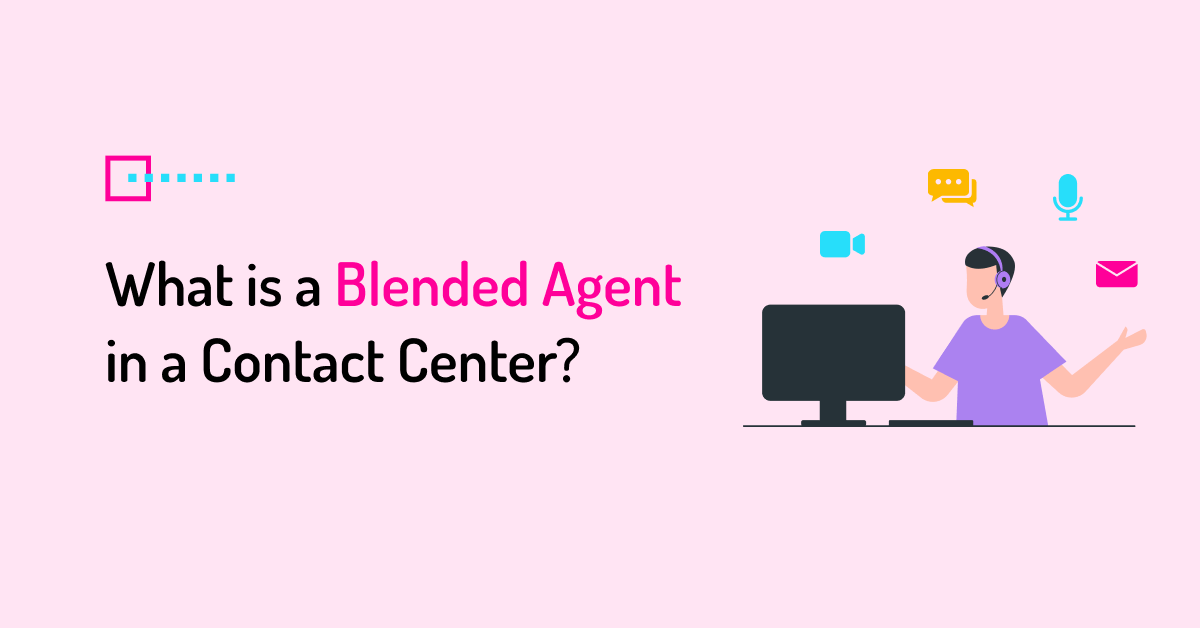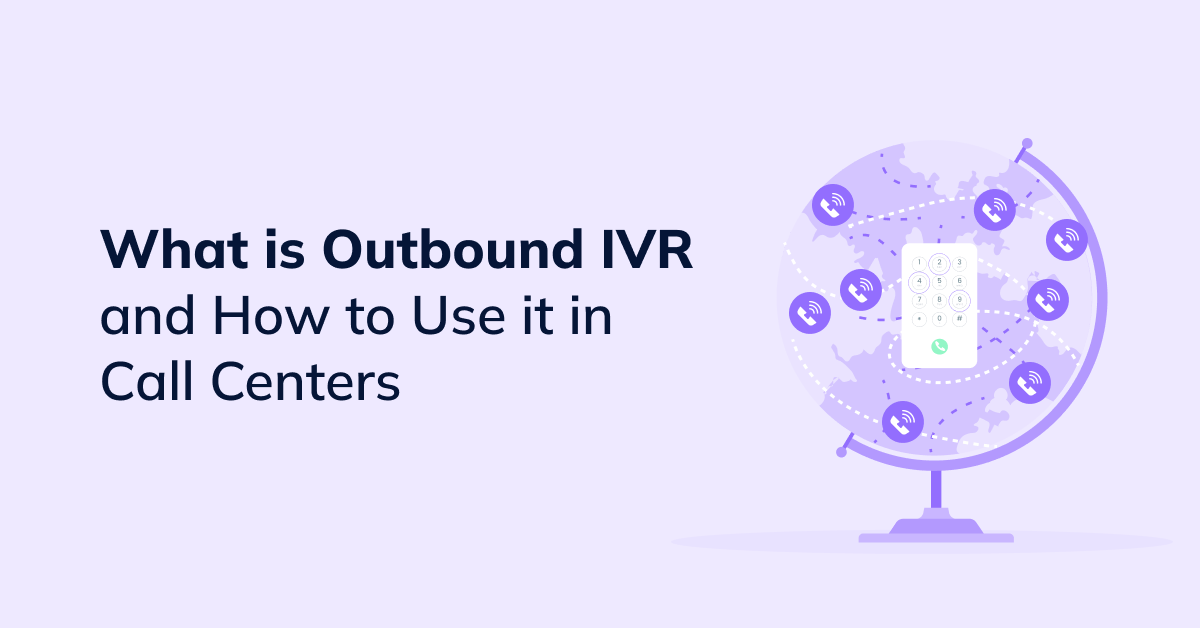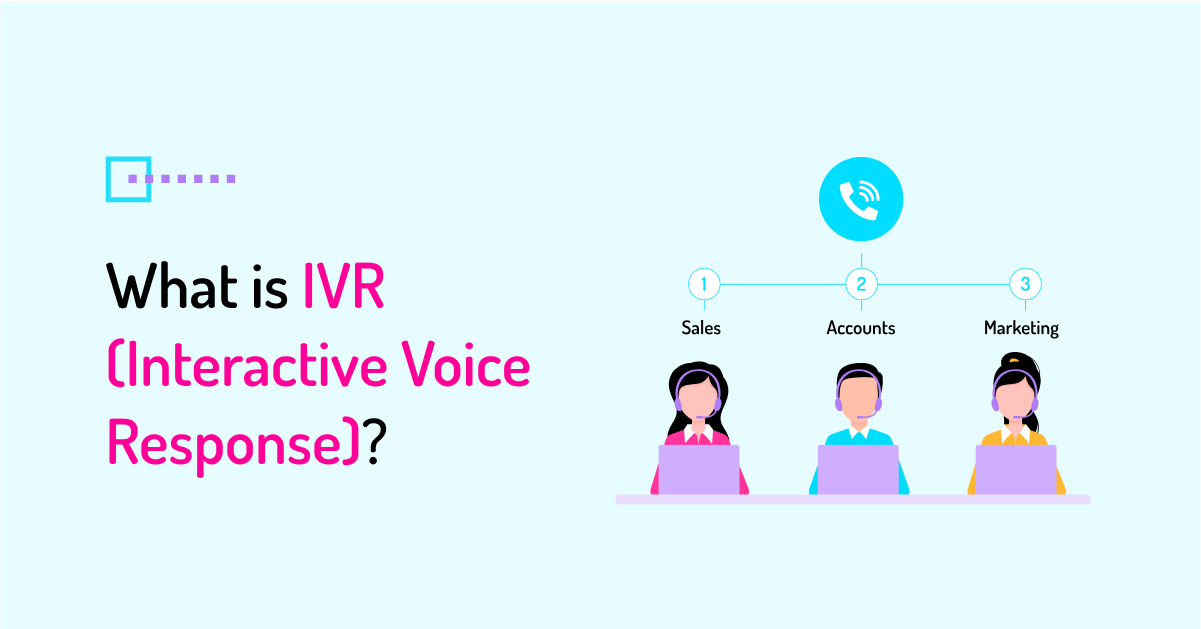Blended agent meaning
A blended agent in a contact center refers to a contact center representative who handles both inbound and outbound communication channels. These agents are skilled in managing incoming calls from customers seeking assistance or support, as well as making outbound calls to reach out to prospects or customers for various purposes such as lead generation, sales, surveys, or follow-ups. Blended agents play a crucial role in maximizing the efficiency of a contact center by managing both incoming and outgoing interactions and ensuring a seamless and balanced workflow.
The Concept of Blended Agents: Breaking Down the Basics
At its core, a blended agent is a contact center representative trained to handle both incoming and outgoing calls. This dual capability is the primary benefit of blended call center solutions. It empowers the agent to switch seamlessly between answering customer concerns and making outbound sales or service calls.
Exploring the Responsibilities of a Blended Agent
Managing Inbound and Outbound Calls:
- Handling incoming calls: Blended agents are responsible for addressing customer inquiries, resolving issues, and providing support during inbound calls. They possess strong communication and problem-solving skills to ensure customer satisfaction.
- Making outbound calls: Blended agents also engage in proactive customer outreach through outbound calls. They may conduct lead generation or sales campaigns, follow up on customer inquiries, or conduct surveys to gather valuable feedback.
Omnichannel Customer Service:
- Email support: Blended agents may handle customer queries and concerns through email communication. They must possess excellent written communication skills to provide clear and concise responses.
- Live chat interactions: Blended agents may engage in real-time conversations with customers using live chat platforms. They must be adept at multitasking and have the ability to provide immediate assistance.
- Social media management: Blended agents may monitor and respond to customer inquiries or feedback received through social media channels. They ensure prompt and professional responses to maintain a positive brand image.
Efficient Call Routing with IVR:
- Utilizing an IVR system: Blended agents leverage Interactive Voice Response (IVR) systems to efficiently route incoming calls to the appropriate departments or agents. This streamlines the call flow and minimizes customer wait times.
- Optimizing average handling time: Blended agents are trained to handle calls efficiently. They strive to maintain an optimal average handling time by resolving customer issues promptly while providing a high level of service.
By fulfilling these responsibilities, blended agents contribute to the smooth functioning of the contact center and help deliver exceptional customer experiences across multiple communication channels.
Blended Contact Centers Examples
Let’s explore some examples of blended contact centers and how they have transformed customer service.
E-commerce Industry:
Online retail giants like Amazon utilize blended contact centers to manage customer inquiries, handle order updates, and provide post-purchase support. Blended agents engage in proactive outbound campaigns for customer feedback and product recommendations while also efficiently addressing inbound queries and concerns.
Telecom Industry:
Telecom companies often operate blended contact centers to offer a seamless customer experience. Blended agents handle incoming calls for billing inquiries, technical support, and service activation while also making outbound calls for service upgrades, renewals, and customer satisfaction surveys.
Financial Services Industry:
Banks and financial institutions utilize blended contact centers to provide comprehensive customer support. Blended agents manage inbound calls for account inquiries, transaction disputes, and loan applications while also conducting outbound calls for debt collection, credit card offers, and account verification.
Travel and Hospitality Industry:
Blended contact centers in this industry cater to a wide range of customer needs. Agents handle inbound calls for flight reservations, hotel bookings, and travel inquiries and proactively reach out to customers for itinerary updates, upselling vacation packages, and gathering feedback to enhance the travel experience.
Healthcare Industry:
Healthcare organizations utilize blended contact centers to efficiently manage patient inquiries, appointment scheduling, and prescription refill requests. Blended agents handle inbound calls for medical advice, insurance queries, and appointment reminders while also making outbound calls for health campaign promotions and patient follow-ups.
Technology Industry:
Technology companies often implement blended contact centers to provide technical support and customer assistance. Blended agents handle incoming calls for troubleshooting, product inquiries, and warranty claims and conduct outbound calls for product launches, customer satisfaction surveys, and service renewal reminders.
These examples illustrate how blended contact centers are effectively implemented across various industries to provide personalized, timely, and efficient customer service. By leveraging the benefits of blending inbound and outbound communication channels, these contact centers ensure a seamless customer experience and foster strong customer relationships.
The Role of Technology in Facilitating Call Blending
Modern blended call center solutions rely heavily on advanced technologies. Contact center software can seamlessly switch agents between inbound and outbound calls, reducing agent idle time. Furthermore, tools like CRM systems help provide a personalized customer experience by equipping agents with relevant customer data during calls.
Analyzing the Pros and Cons of Blended Contact Centers
Like any business model, blended call centers come with their advantages and potential drawbacks. On the plus side, they offer increased flexibility, improved agent productivity, and better customer service through multiple channels. However, they may also pose challenges in terms of managing workload balance and providing sufficient training for agents to excel in both service and sales roles.
Blended Agents vs. Dedicated Agents
While blended agents offer versatility, businesses may also employ dedicated inbound or outbound agents. The choice between the two depends on the company’s specific needs. Blended agents can provide fluidity and flexibility, dedicated agents allow for specialization in either customer service or sales.
Call Blending: Revolutionizing Traditional Call Centers
Call blending is transforming the contact center industry by breaking down the silos between inbound and outbound calls. It offers a proactive approach to call management, ensuring that no agent seat remains idle for long.
Why a Blended Contact Center Could be Your Best Option
A blended contact center brings all the benefits of improved customer satisfaction, agent productivity, and operational efficiency. As customer expectations evolve and businesses strive to meet them, the blended model provides the flexibility needed to adapt to changing customer behaviors and business needs.
The Blueprint: Steps to Building a Blended Contact Center
Building a blended contact center requires a strategic approach. Key steps include understanding your customer needs, implementing suitable contact center software, training agents for both inbound and outbound calls, and monitoring key metrics to track performance.
Monitoring Success: Key Metrics for Blended Contact Centers
Successful management of a blended contact center involves monitoring important metrics such as average handling time, agent idle time, and customer satisfaction scores. These metrics offer insights into the efficiency of operations and can help identify areas for improvement.
The Power of Blended Agents: Unraveling the Benefits
The blended agent model in a call center environment offers an array of compelling benefits that can radically transform productivity and customer satisfaction levels. By being versatile enough to handle both inbound and outbound calls, these agents play a crucial role in streamlining the overall communication process.
Minimizing Idle Time:
In conventional call centers, agents specialized in either outbound or inbound calls can often have significant idle time, especially during non-peak hours. However, in the blended agent model, agents can switch between making outgoing calls and handling incoming calls based on real-time demand. This flexibility drastically reduces idle time and ensures that the workforce is efficiently utilized at all times.
Boosting Productivity:
Blended agents can significantly improve the overall productivity of a call center. The ability to flexibly handle both incoming and outgoing calls enables them to maintain a steady workflow. During high-traffic periods, they can primarily focus on managing the surge of incoming calls. Conversely, during quieter periods, they can shift their focus to making outbound calls for sales, customer follow-ups, or proactive customer care. This flexible handling of call volume helps maintain a high level of productivity throughout the workday.
Improving Customer Experience:
In the modern business landscape, customer experience is paramount. By being trained to handle multiple customer interaction channels, blended agents can deliver a more seamless and satisfying customer experience. Whether they’re responding to an inbound customer query, initiating an outbound campaign, or interacting through other channels like email or chat, their versatility ensures that customers receive a consistent and high-quality service experience. This not only enhances immediate customer satisfaction but also helps build long-term customer loyalty.
In sum, the benefits offered by blended agents in a contact center are manifold. They play a significant role in minimizing idle time, boosting productivity, and, most importantly, improving the customer experience – three critical factors that contribute to the success of any business in today’s customer-centric marketplace.
Potential Risks Associated with Blended Agents
While blended call center agents bring many benefits, there are also potential risks to consider. These include the risk of agent burnout due to the high demands of handling multiple channels and call types and the challenge of providing comprehensive training for all areas of responsibility.
The Future of Blended Agents in Evolving Contact Center Models
As the business environment continues to evolve, so too will the role of blended agents. Advances in AI and machine learning technologies, the increasing importance of omnichannel communication, and the rise of remote agents all point to exciting developments in the future of blended call centers.
The Vital Role of Blended Agents in a Customer-Centric Era
In conclusion, blended agents are increasingly critical in today’s customer-centric business landscape. By managing both inbound and outbound calls, they help businesses streamline operations, maximize efficiency, and, most importantly, improve customer satisfaction.





 +18889082995
+18889082995
 +442036084160
+442036084160
 +97237237006
+97237237006